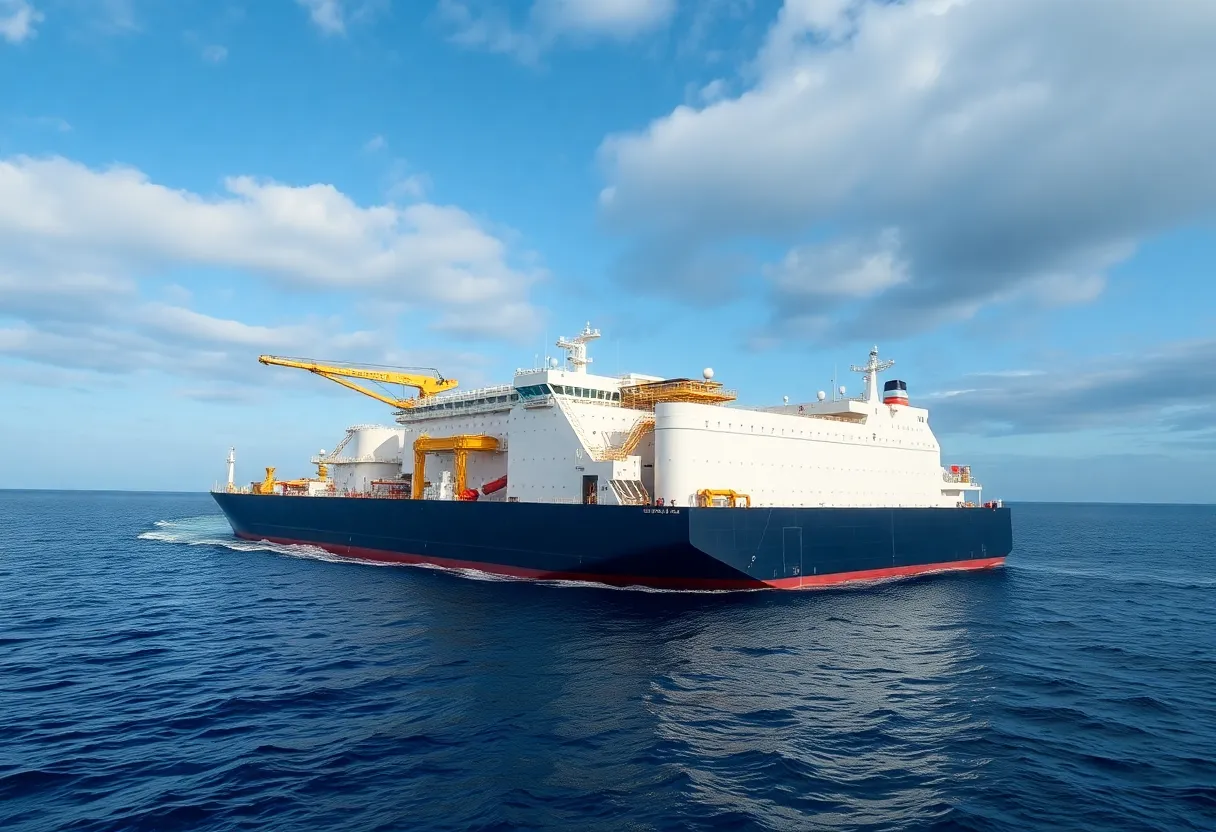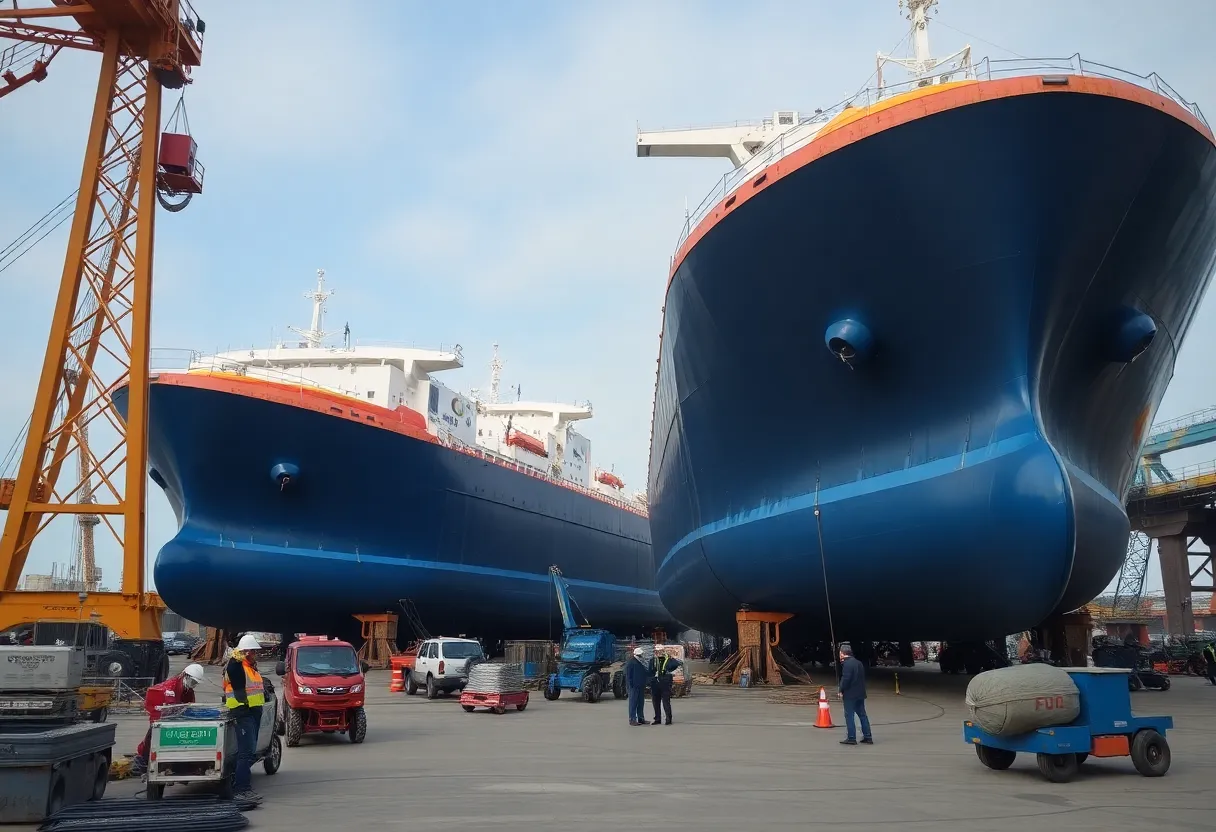News Summary
Samsung Heavy Industries has secured a significant $5 billion contract for the construction of floating liquefied natural gas (LNG) facilities off the U.S. East Coast. Starting in December, the three-year project aims to enhance the U.S.’s role as a key LNG exporter amid rising energy demands. While environmental concerns regarding offshore drilling have been raised, Samsung assures compliance with EPA standards to mitigate adverse impacts. The initiative is expected to create thousands of jobs in the maritime construction sector, highlighting its strategic importance in meeting global energy needs.
Off the U.S. East Coast: Samsung Heavy Industries Secures $5 Billion Floating LNG Contract
Off the U.S. East Coast, Samsung Heavy Industries has won a major contract worth $5 billion for the construction of floating liquefied natural gas (LNG) facilities. Construction is set to begin in December, addressing the rising energy demands in the region.
The project, which will span three years, aims to enhance the U.S.’s role as a key LNG exporter. This initiative involves building advanced floating facilities that will help meet global energy needs while supporting domestic energy production. Samsung Heavy Industries plans to utilize its expertise to ensure timely completion, with operations expected to boost export capabilities significantly.
Environmental concerns have emerged from critics regarding the potential impacts of offshore activities, particularly on marine life and ecosystems. Samsung Heavy Industries has stated that the project will comply with EPA standards to minimize any adverse effects. Meanwhile, suppliers from Texas are preparing for material shipments, indicating a coordinated effort across various U.S. regions.
This contract builds on Samsung Heavy Industries’ recent successes in similar projects in Asia, further solidifying its global reputation in the energy sector. The company’s track record includes efficient delivery of large-scale maritime constructions, which has contributed to this latest win. White House officials have highlighted the project’s role in promoting energy independence for the U.S., emphasizing its strategic importance amid shifting global energy dynamics.
Analysts forecast that the project will lead to a surge in maritime construction jobs, potentially creating thousands of opportunities in engineering, manufacturing, and related fields. This development comes as the U.S. seeks to expand its infrastructure to support growing export demands, with the floating LNG facilities positioned to play a pivotal role.
Climate advocates have raised protests over the potential effects on fisheries and local environments, pointing to the broader implications of increased offshore drilling. Despite these concerns, Samsung Heavy Industries maintains that adherence to regulatory guidelines will help balance energy development with environmental protection.
The floating LNG facilities will involve innovative engineering techniques, including the integration of advanced liquefaction processes on floating platforms. This approach allows for more flexible and efficient operations compared to traditional onshore facilities, adapting to the specific challenges of offshore locations. The project’s scale underscores the growing demand for LNG as a transitional fuel in the global energy market.
In the broader context, this contract reflects ongoing trends in the U.S. construction industry, where energy projects are driving investments. Recent reports indicate that such initiatives are helping to stabilize the sector amid various economic factors. For instance, while weather-related delays have affected some construction activities nationwide, projects like this one are progressing with structured timelines.
The involvement of Texas suppliers highlights the interconnected supply chain in U.S. construction efforts, drawing on domestic resources to support large-scale endeavors. This not only reduces dependency on international materials but also stimulates local economies. As construction ramps up, the focus on safety and compliance will be critical to addressing any potential challenges.
Overall, this development marks a significant step in the U.S.’s energy strategy, positioning the country as a leader in LNG exports. With construction starting soon, stakeholders are monitoring progress closely, balancing economic benefits with environmental responsibilities.
Background on the Project
Floating LNG facilities represent a modern approach to natural gas processing, allowing extraction and liquefaction at sea. This method has been successfully implemented in regions like Asia, where Samsung Heavy Industries has completed similar projects. The U.S. East Coast location leverages existing infrastructure and proximity to major shipping routes, enhancing export efficiency.
The three-year timeline includes phases for design, fabrication, installation, and testing, involving a collaborative effort from various industry partners. This project’s success could pave the way for additional investments in offshore energy infrastructure, contributing to long-term energy security.
Implications for the Industry
The contract is expected to influence job markets, with predictions of increased employment in skilled trades. This aligns with broader trends in construction, where energy sector demands are creating opportunities despite challenges like supply chain disruptions. The emphasis on EPA compliance sets a standard for future projects, promoting sustainable practices in the industry.
In summary, this $5 billion contract for floating LNG facilities off the U.S. East Coast is a key development in energy infrastructure, starting in December and spanning three years. It underscores the U.S.’s growing role as an exporter while addressing environmental concerns through regulatory adherence.
(Word count: 652)
FAQ Section
- Q: What is the value of the contract secured by Samsung Heavy Industries?
A: The contract is valued at $5 billion for floating LNG facilities off the U.S. East Coast. - Q: When does construction begin on the floating LNG facilities?
A: Construction begins in December. - Q: How long will the project for the floating LNG facilities last?
A: The project spans three years. - Q: What is the expected outcome of this project for the U.S.?
A: The project will position the U.S. as a key exporter. - Q: What concerns have been raised about the project?
A: Critics raise environmental concerns about offshore drilling, but the company assures compliance with EPA standards. - Q: How does this project relate to previous ones?
A: This win follows similar projects in Asia, boosting global reputations. - Q: What do White House officials say about the project?
A: White House officials emphasize energy independence. - Q: What are suppliers doing in relation to this project?
A: Suppliers from Texas are gearing up for shipments. - Q: What do analysts predict from this project?
A: Analysts predict a surge in maritime construction jobs. - Q: What actions have climate advocates taken?
A: Climate advocates protest the potential impact on fisheries.
Key Features Chart
| Feature | Details |
|---|---|
| Contract Value | $5 billion |
| Construction Start | December |
| Project Duration | Three years |
| U.S. Role | Key exporter |
| Environmental Assurance | Compliance with EPA standards |





